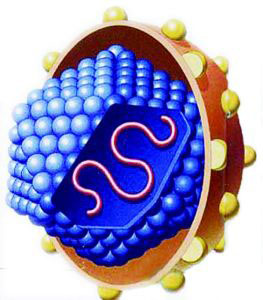
TCM Perspective On
Hepatitis C
The thinking that underlies TCM is that the body, mind and spirit are all inter-dependent, and therefore affect each other on all levels. Because of this, disease in one part of the body or organ may affect many other parts of the body. The main focus of Chinese medicine is on how the body’s energy responds to disease, rather than the disease itself. Its function is to bring the body and your whole energy system back to a state of harmony.
The liver is seen as vitally important in Chinese medicine. This is because it has such an effect on other organs and systems in the body. The liver is thought to be responsible for the smooth flow of energy or Qi throughout the body, so even for people without hepatitis C, the health of the liver is given special importance by practitioners. People with hepatitis C may be prone to disturbances, weakness or stagnation in the smooth flow of this internal energy. This is often experienced as a pain in the liver area, headaches, mood swings, fatigue, foggy head and many other symptoms associated with hepatitis C.
Western Point of View
The hepatitis C virus is a small, enveloped, single-stranded, RNA virus in the Flaviviridae family. The virus is able to enter liver cells from the blood and then use those cells to make more copies of the hepatitis C virus. As more and more of the hepatitis C virus is made in the liver cells, they can become damaged and may even die.
Just as there are different types of hepatitis viruses, there are also a few different types of the hepatitis C virus itself. Though they all cause hepatitis C, each type of the virus has a slightly different arrangement of its genetic material, in this case called RNA. The specific arrangement of the RNA is called the genotype.
The main hepatitis C genotypes are known simply as genotypes 1, 2, 3, 4, 5, and 6. Of these different genotypes, genotype 1 is the type most commonly found in the United States. Between 70 to 90 percent of Americans with hepatitis C have this genotype. Hepatitis C virus genotypes 2 and 3 are less common. Only 10 to 20 percent of infected people in the US have either of these genotypes.